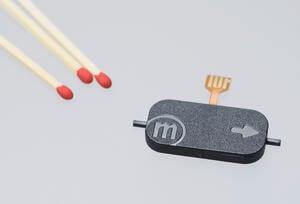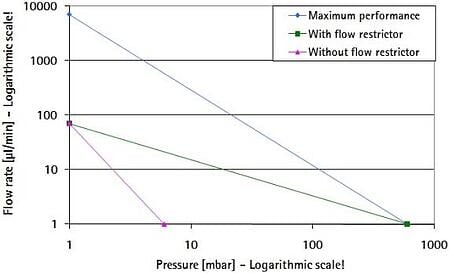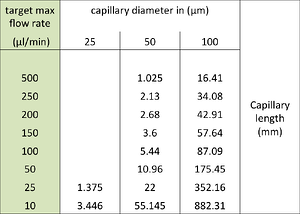This blog post provides a summary of the application note: A Guideline for Operating Micropumps at Low Flow Rates.
 The Bartels mp6 micropump is a piezoresistive diaphragm micropump targeting flow rates up to 7 millileters per minute (ml/min) for liquids and 18 ml/min for gases with no backpressure and 600 mbar maximum pressure at no flow. Users can adjust the pumping rate by modifying the amplitude and frequency.
The Bartels mp6 micropump is a piezoresistive diaphragm micropump targeting flow rates up to 7 millileters per minute (ml/min) for liquids and 18 ml/min for gases with no backpressure and 600 mbar maximum pressure at no flow. Users can adjust the pumping rate by modifying the amplitude and frequency.
To achieve low flow rates, the user should lower the amplitude. The consequence of doing this without a restrictor is that the generated pressure levels are also lowered which may be unsuitable. A minor pressure raise could also cause clogging since the maximum backpressure is too low to overcome. When a restrictor is applied (preferably to the pump exit), the flow rate is reduced by the fluidic resistance. That means with the maximum amplitude and optimal frequency, the flow rate is only as high as the restrictor allows. The pressure generation of the pump is the same as without the restrictor. (see the chart below).

The restrictor can be a short piece of narrow tubing (capillary) for a simple application or a precision orifice with an exact inner dimension. The application note focuses primarily on using capillaries as the user can adjust the flow rate by changing the length. Orifices come in preset dimensions - diameter and length - and it may not be possible to find the correct orifice for a specific flow rate.
Calculating the correct restrictor can be done by treating the pump as an electrical circuit, calculating the internal fluidic resistance of the pump, adding the restrictor as a resistor and applying the law of Hagen-Poiseuille to determine the resistance. The maximum flow rate is dependent on the total resistance of this system. Detailed steps are available in the application notes.
Once the restictor is finally set, it is then possible to vary the flow rate by changing the amplitude from the new restricted max flow to zero. The full range of the amplitude allows smaller flow rate steps with voltage changes than with the unrestricted pump. See the calculation results in the example below based on an mp6 pumping water.

Possible capillary material includes PEEK tubing and polyimide (PI) tubing which is available in a wide variety of diameters and is readily available from many suppliers. PEEK and PI material are resistant to a wide variety of pumping media.
Download the complete application note


